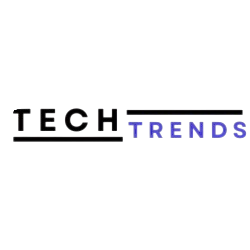Campaign pacing defines how and when your budget gets spent. When done right, it balances spend across time, prevents budget exhaustion, and ensures consistent ad delivery. When done wrong, it leads to underperformance, low ROI, and missed targets.
In this guide, you’ll discover everything you need to master campaign pacing—from pacing models and real-time tracking to toolkits, checklists, and hiring insights. You’ll also learn how brands using tools like Camphouse and Alooba optimize their pacing to drive performance at scale.
Let’s get into it.
What Is Campaign Pacing in Advertising?
Campaign pacing is the method advertisers use to manage how a campaign’s budget is distributed over time.
It prevents your ads from overspending too fast or underdelivering by the end of the campaign. Whether you’re working with Google Ads, Meta, programmatic DSPs, or direct buys, pacing helps align your spend rate with performance goals.
Key Functions of Campaign Pacing
- Regulates daily or hourly spend
- Ensures consistent delivery across campaign duration
- Maintains budget availability for peak performance windows
- Supports performance-based goals like CTR, CPC, and conversions
Example: For a 30-day campaign with a $9,000 budget, proper pacing means spending around $300 per day unless data suggests reallocation.
Why Is Campaign Pacing Critical for Campaign Success?
You can lose control of your budget in 3 ways:
- Overspending early
- Underspending throughout
- Failing to adapt to performance data
Benefits of Proper Pacing
- Keeps ad delivery steady instead of spiking or vanishing
- Reduces budget waste by aligning spend with demand
- Allows adjustments for market fluctuations
- Enhances overall campaign ROI
Insight: Brands that fail to manage pacing correctly see a 20-50% drop in return on ad spend (ROAS). Balanced pacing improves ROI by 90% on average.
What Are the Different Types of Campaign Pacing Strategies?

Your campaign objective defines your pacing strategy. Choosing the right one ensures your budget gets the job done.
Standard Pacing
- Distributes spend evenly across the entire campaign
- Works well for awareness or reach goals
- Prevents early burnout of the budget
Best For: Always-on campaigns or fixed daily targets
Accelerated Pacing
- Spends budget as quickly as possible
- Focuses on early impression wins or short windows
- Risks budget exhaustion before the campaign ends
Best For: Product launches, sales promotions, event-driven marketing
Custom Pacing
- Adjusts spend dynamically based on performance and audience behavior
- Shifts budget to high-performing segments or times
- Requires advanced monitoring tools or automation
Best For: Complex multi-audience or performance-driven campaigns
How Do You Monitor and Adjust Campaign Pacing in Real Time?

You can’t set pacing and walk away.
Monitoring ensures your campaign stays aligned with goals, reacts to data shifts, and avoids budget misfires.
Step 1: Track Daily Spend
Use platforms like Google Ads, Meta, or tools like Camphouse. Confirm spend aligns with daily pacing goals.
Example: $10,000 campaign over 20 days → $500/day target spend.
Step 2: Analyze Key Metrics
Review:
- Click-through rate (CTR)
- Cost per click (CPC)
- Cost per acquisition (CPA)
- Impressions
- Conversions
Performance dips? Adjust pacing immediately.
Step 3: Rebalance Based on Remaining Days
If early overspend occurs, lower spend for remaining days. If spend lags, raise the cap to catch up.
Tip: Use pacing forecasts from Camphouse to model outcomes before you act.
What Tools Can Help You Automate and Optimize Campaign Pacing?
Automation saves time. Insights boost ROI.
Here are the best tools for real-time pacing control:
Tools to Use:
- Camphouse: Centralizes pacing, performance, and adjustment
- Google Ads Scripts: Custom alerts and auto-budget tweaks
- Revealbot: AI-powered rules for social and search campaigns
- Alooba: Assesses skill level of media buyers and marketing hires
Camphouse Advantage: Real-time alerts, pacing dashboards, and forecasting tools for smoother campaign control.
How Do You Train or Hire for Pacing Skills?
Campaign pacing is a specialized skill. You need people who understand strategy, data, and daily optimization.
Skills to Look For
- Knows how to manage daily budget caps
- Reads CTR and CPA data for decision-making
- Adjusts pacing to match conversion timing
- Uses automation tools efficiently
Roles That Require It
- Media Buyer
- PPC Manager
- Digital Marketing Analyst
- Performance Marketing Lead
Alooba Insight: Use scenario-based assessments to test pacing knowledge in real-world campaign simulations.
What Are the Most Common Campaign Pacing Mistakes?
Avoiding mistakes means saving money and improving results.
Top Errors:
- Setting one pacing mode for all audiences
- Ignoring weekday vs. weekend performance variances
- Allowing accelerated delivery without caps
- Forgetting to adjust pacing mid-flight
Real Risk: Overspending 60% of your budget in the first 7 days leads to low mid-flight visibility and poor campaign longevity.
Are you spending too much too soon—or not enough to make an impact? Don’t let poor pacing drain your budget. Our Paid Search Marketing experts help you plan smarter, track in real time, and scale results with precision. Whether you’re running Google Ads, shopping campaigns, or retargeting funnels, we’ll align your budget with what actually drives ROI. Let’s build campaigns that work harder—and last longer.
Checklist: How To Run a Pacing-Optimized Campaign
Before launch:
- Set clear daily and total budgets
- Choose pacing type (standard, accelerated, custom)
- Use tools for forecasting and alerts
- Align delivery windows with audience behavior
- Track KPIs like CPA, CTR, and spend
- Adjust every 2–3 days based on real-time insights
FAQs
How do I choose the best pacing mode?
Match pacing to your campaign goals and timeline. Awareness = standard. Conversions = custom.
Can automation help with pacing?
Yes. Tools like Camphouse and Revealbot adjust budget automatically based on real-time performance.
What if I overspend early in my campaign?
Lower spend in later days, cut underperforming ad sets, or redistribute across channels.
Does platform matter for pacing?
Yes. Each platform (Google, Meta, DSPs) has unique pacing algorithms. Understand and adjust accordingly.
Conclusion
Campaign pacing is more than budget control.
It’s how you:
- Maintain consistent delivery
- Align spend with outcomes
- Scale your ROI efficiently
When you use real-time tools, monitor trends, and adjust dynamically, you shift from reactive to predictive advertising.
Let your pacing strategy lead. Your results will follow.





